- Home
- Concerts & Events
- Plan Your Experience
- About
- Initiatives & Community
- Get Involved
- Support
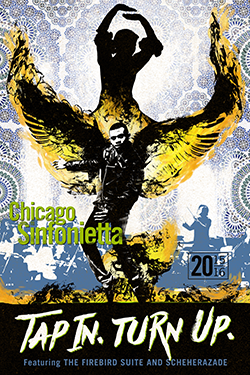
With Tap In. Turn Up., the Chicago Sinfonietta opens the 2015-16 Season with its usual bravado, freely juxtaposing traditions and artistic disciplines, this time by incorporating two forms of percussive dance. Throughout its history, the orchestra has upended notions of what a symphonic concert should be, opting instead to consider what it could be. In the process, they have heeded a famous jazz musicians advice: "There are two kinds of music, the good & the other kind. I play the good kind." So does the Chicago Sinfonietta.
THE
ARTISTS
Mei-Ann Chen, Music Director and conductor
 Mei-Ann Chen begins her fifth season as Chicago Sinfonietta Music Director. In her tenure with the organization, she has brought the orchestra to new artistic heights, developing an aggressively adventurous approach to repertoire and collaboration while firmly anchoring her ambitious plans in the Sinfonietta’s quarter-century plus heritage of diversity, inclusion and service to the community. In the process, she has earned two awards from the League of American Orchestra: The Helen M. Thompson Award, given to a music director every two years to recognize their impact and potential for a significant national career, and one for the orchestra, a First Place Award for Adventurous Programming.
Mei-Ann Chen begins her fifth season as Chicago Sinfonietta Music Director. In her tenure with the organization, she has brought the orchestra to new artistic heights, developing an aggressively adventurous approach to repertoire and collaboration while firmly anchoring her ambitious plans in the Sinfonietta’s quarter-century plus heritage of diversity, inclusion and service to the community. In the process, she has earned two awards from the League of American Orchestra: The Helen M. Thompson Award, given to a music director every two years to recognize their impact and potential for a significant national career, and one for the orchestra, a First Place Award for Adventurous Programming.
As the Chicago Tribune’s John von Rhein has remarked, “Mei-Ann Chen… was born to lead this group. She plays and speaks from the heart, the body and the head, and the audience and players have embraced her.” There’s also this from the Chicagoist blog: “We love Chicago Sinfonietta’s approach to classical music: it really opens it up to a new audience and makes it approachable and interesting.”
Born in Taiwan, Ms. Chen has lived in the United States since 1989. She holds a Doctor of Musical Arts degree in conducting from the University of Michigan, where she was a student of Kenneth Kiesler. Prior to that, she was the first student in New England Conservatory’s history to receive master’s degrees, simultaneously, in both violin and conducting. She is also the Music Director of the Memphis Symphony Orchestra and is in high demand around the globe as a guest conductor.
Mei-Ann Chen’s complete biography can be found here.
Clinard Dance Theatre, Wendy Clinard, Artistic Director
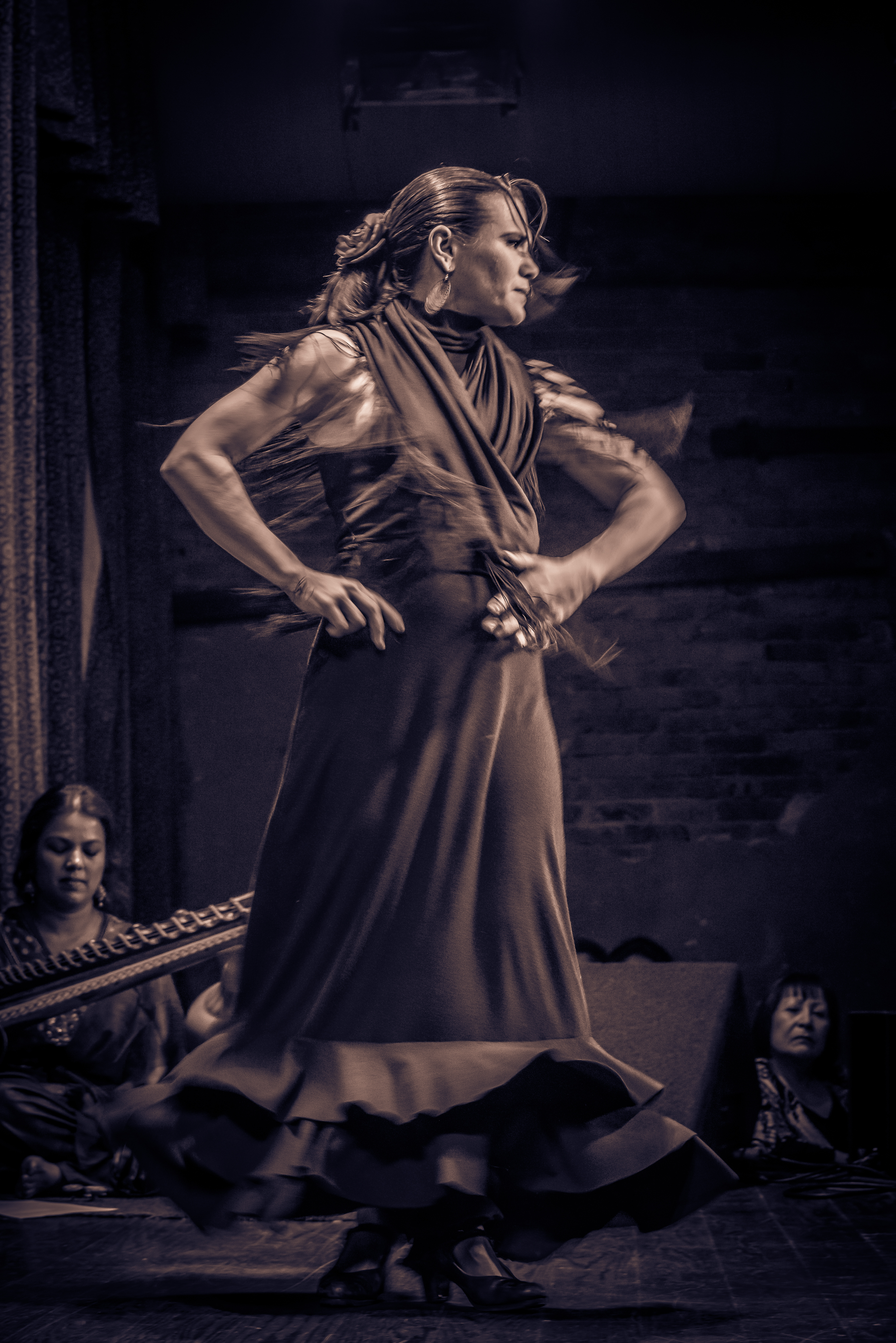 Given that the Chicago Sinfonietta draws upon a diverse mix of disciplines and styles in its programming philosophy and that the very idea of diversity is central to its mission, it is hard to conceive of a more apt artistic partner than Clinard Dance Theatre. A contemporary dance company rooted in flamenco, Clinard brings together people from a diverse range of artistic disciplines and cultural backgrounds to create provocative works that explore personal and global concerns, connecting the audience to the world through art.
Given that the Chicago Sinfonietta draws upon a diverse mix of disciplines and styles in its programming philosophy and that the very idea of diversity is central to its mission, it is hard to conceive of a more apt artistic partner than Clinard Dance Theatre. A contemporary dance company rooted in flamenco, Clinard brings together people from a diverse range of artistic disciplines and cultural backgrounds to create provocative works that explore personal and global concerns, connecting the audience to the world through art.
After completing a BFA at The Art Institute of Chicago in 1993, Wendy Clinard embarked on a rigorous apprenticeship with flamenco dancer Edo Sie, while augmenting her studies in Spain with notable teachers Juana Amaya and Hiniesta Cortez. She has been performing and teaching the art of Flamenco for the past 16 years. She founded Clinard Dance in 1999. Clinard Dance creates and presents theatrically compelling works that address Clinard’s personal and global concerns and tantalize the imagination. Clinard Dance utilizes a practical process of creation, one that involves movement, rhythms, drawing, sculpture, video, and precise observation of real phenomena as fundamental to its research, development, and rehearsal cycles. Company productions are the result of years of work, and have been described as “physically bold poetic excursions with a fierce intelligence.”
Clinard Dance has a newly unveiled website that beautifully represents the company. The video dramatically demonstrates the storytelling at the heart of their choreography.
Cartier Williams, Tap Master
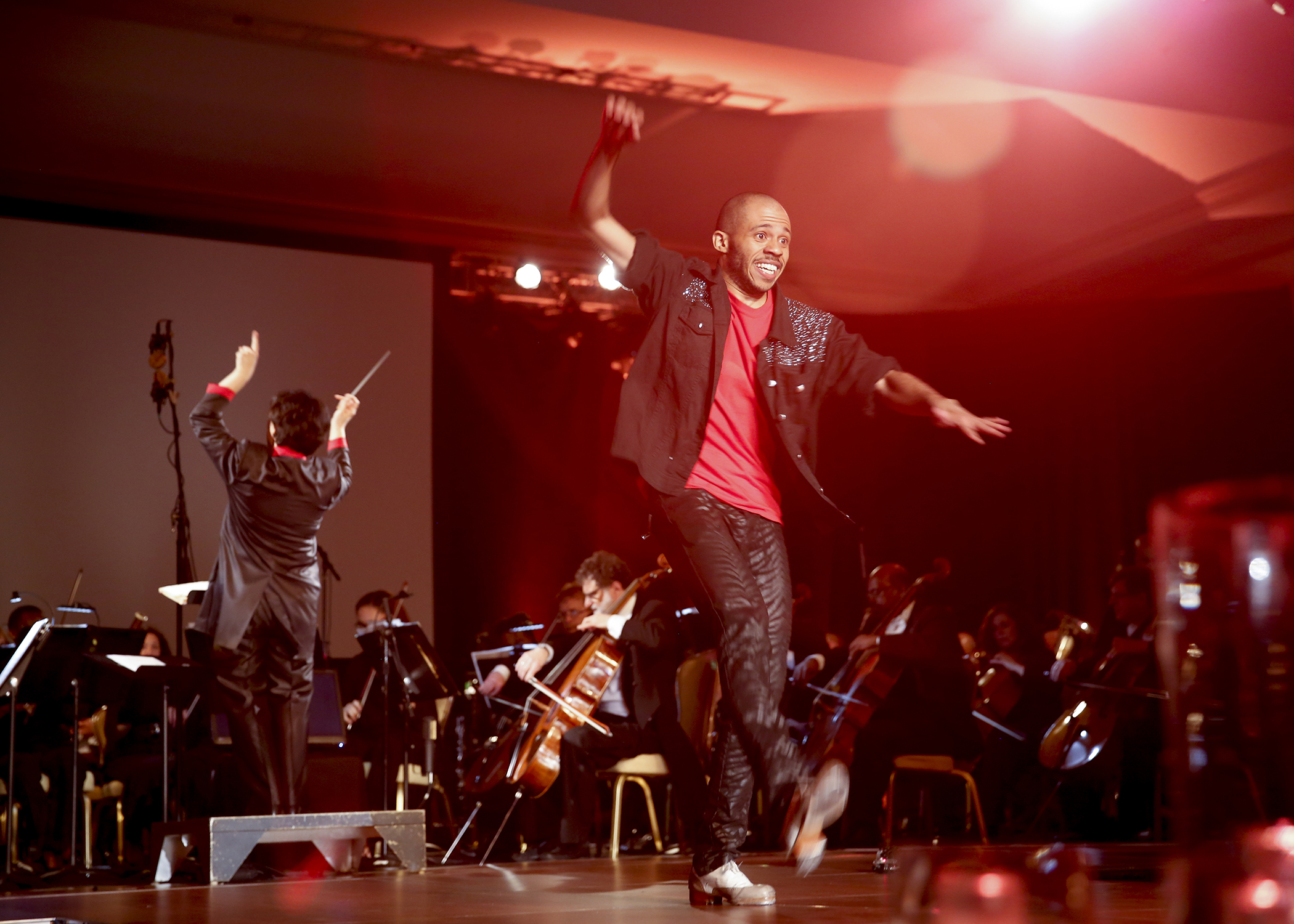 There are several forms of percussive dance ranging from flamenco to Mexican zapateado, but perhaps the one most familiar to North Americans is tap dance, and Cartier Williams is one of its finest practitioners. A hoofer, choreographer, filmmaker, and performer hailing from Washington, D.C., he began his tap dancing career at the age of four.
There are several forms of percussive dance ranging from flamenco to Mexican zapateado, but perhaps the one most familiar to North Americans is tap dance, and Cartier Williams is one of its finest practitioners. A hoofer, choreographer, filmmaker, and performer hailing from Washington, D.C., he began his tap dancing career at the age of four.
He learned his first tap steps from his grandmother Audrey Williams at the age of four. By the time he was six years old, Williams performed a piece choreographed by Mýa Cartier. This earned him the Apollo Kids Award at the prestigious Apollo Theater, and the distinction as one of the youngest “Apollo Legends.” From the ages of six to nine he studied at The Washington School of Ballet under the tutelage of Mary Day. At age 10, Cartier co-starred with tap legends Buster Brown, Jimmy Slyde and Dianne Walker in the international tour of Footnotes. A longtime protégé of tap legend Savion Glover, he has danced for two presidents and performed on television in front of a national audience. He’s shared the stage with dance icons, Gregory Hines, Clayton “Peg Leg” Bates, the Nicholas Brothers, as well as with his mentor, Savion Glover.
Williams is also the co-founder and co-artistic director of The Williams Davis Foundation, a nonprofit organization that is committed to the performing arts. He is also the founder of Cartier Williams Dance Theater, a program within the Foundation, focused to preserve the art across national and international borders through teaching, performances, scholarships, and workshops.
The arts website Neon Gods interviewed Williams in 2014. The video is a preview from Williams' performance with the Chicago Sinfonietta at the 2015 Ball.

Paul Freeman: Season of Celebration
Tap In. Turn Up. marks the first in a full season of events celebrating the life and legacy of Maestro Paul Freeman. Join us for a special dedicated piece at the top of the concert and share your memories through our "1,000 Stories Project" video booth.
THE
COMPOSERS
Fandangos
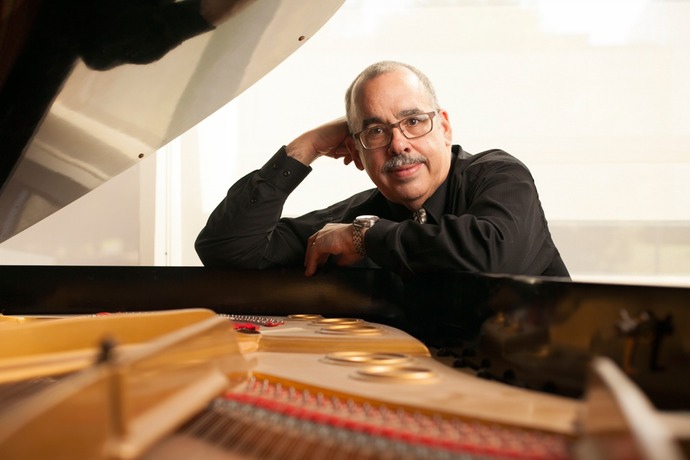 The music of Puerto Rican composer Roberto Sierra is familiar to Chicago’s summer classical music patrons, especially those of the Grant Park Music Festival. Perhaps that is because one thinks of sunshine and warmth when Puerto Rico comes to mind, and indeed, the Caribbean spirit and rhythm that informs much of his music is a perfect match for summer skies. Here, though, the Chicago Sinfonietta looks beyond the palm trees and traces the music back to the Spanish flamenco traditions that are a significant part of the European-African-indigenous blend that arose in Latin America by matching it to the modern flamenco-based dance of Wendy Clinard and Clinard Dance Theatre.
The music of Puerto Rican composer Roberto Sierra is familiar to Chicago’s summer classical music patrons, especially those of the Grant Park Music Festival. Perhaps that is because one thinks of sunshine and warmth when Puerto Rico comes to mind, and indeed, the Caribbean spirit and rhythm that informs much of his music is a perfect match for summer skies. Here, though, the Chicago Sinfonietta looks beyond the palm trees and traces the music back to the Spanish flamenco traditions that are a significant part of the European-African-indigenous blend that arose in Latin America by matching it to the modern flamenco-based dance of Wendy Clinard and Clinard Dance Theatre.
Roberto Sierra was born in 1953 in Vega Baja, Puerto Rico, and studied composition both in Puerto Rico and Europe, where one his teachers was György Ligeti. As a living composer, his modern approach serves as both a descendent of and comment on the works of the older, Euro-centric composers in this concert. In fact, Fandangos (a Spanish word that roughly translates to ‘dance party’) itself references earlier works for keyboard and guitar by Antonio Soler and Luigi Boccherini. The result is a sort of hyper-fandango as the orchestra colors the rhythmic nature of the original pieces. And, of course, the addition of that quintessential flamenco instrument, the castanet, further heightens the connection.
Roberto Sierra’s website has biographical information, music samples and more. The video is a complete performance of Fandangos. As you listen, see if you can predict how the sound and movement of flamenco dance will compliment Sierra’s rhythms.
The Firebird Suite, Movements 3-6
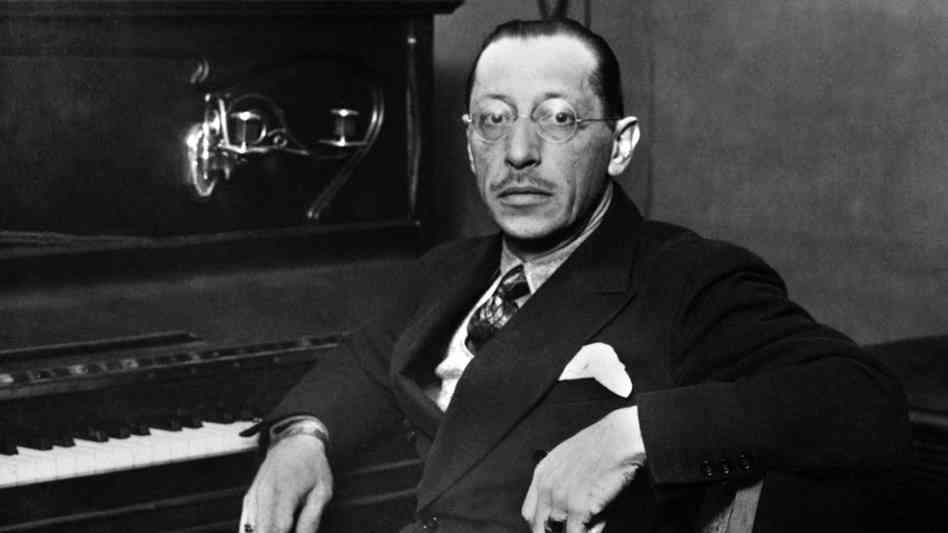 If it is relatively easy to imagine flamenco in the context of Roberto Sierra, it is perhaps not as obvious to see how the tap dance of Cartier Williams will match the music of Igor Stravinsky. Yet, it’s worth remembering that before there was a Firebird Suite, there was The Firebird, a ballet by Stravinsky that premiered in Paris in 1910 and was an instant smash hit. It was a major breakthrough for the young composer, transforming him into a star overnight, and he retained a fondness for it for decades, revisiting it three times to create concert suites, the most popular of which is the 1919 version that the Sinfonietta will perform movements from tonight.
If it is relatively easy to imagine flamenco in the context of Roberto Sierra, it is perhaps not as obvious to see how the tap dance of Cartier Williams will match the music of Igor Stravinsky. Yet, it’s worth remembering that before there was a Firebird Suite, there was The Firebird, a ballet by Stravinsky that premiered in Paris in 1910 and was an instant smash hit. It was a major breakthrough for the young composer, transforming him into a star overnight, and he retained a fondness for it for decades, revisiting it three times to create concert suites, the most popular of which is the 1919 version that the Sinfonietta will perform movements from tonight.
Of course, ballet dancers glide. Their footsteps are silent. Thus, adding tap dance to the score amounts to adding a percussion instrument to Stravinsky’s composition. There is the rhythm of Russian folk music in The Firebird as well as passages of grandeur, and the finale manages both simultaneously. Still, one must be respectful of the masters, of which Stravinsky surely is. Cartier Williams, not unlike the young Stravinsky of 1910, is a phenom, and surely understands the need to honor the past while creating something new. In the Sinfonietta, he has found a good partner.
Classical Net has a solid overview of Stravinsky’s career and music. The video is the final three movements performed by the YouTube Symphony Orchestra in 2011.
Prince Igor: Polovtsian Dances
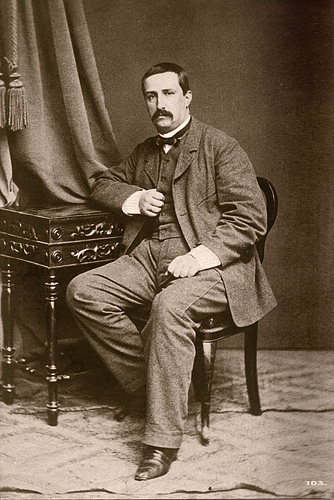 When Sergei Diaghilev, the Paris ballet impresario who hired Igor Stravinsky to score The Firebird in 1910, it was not his first foray into Russian music. In fact, it was only in the previous year that he presented Alexander Borodin’s Prince Igor at the Théâtre du Châtelet. And while that 1890 opera was certainly not the breakthrough that Firebird would become, it is often staged, and some of its music would find its way into popular culture through Broadway musicals, jazz arrangements and even hip-hop. The Polovtsian Dances are taken from Act II of Igor, and it was Daiaghilev who first extracted them from the older complete work for presentation.
When Sergei Diaghilev, the Paris ballet impresario who hired Igor Stravinsky to score The Firebird in 1910, it was not his first foray into Russian music. In fact, it was only in the previous year that he presented Alexander Borodin’s Prince Igor at the Théâtre du Châtelet. And while that 1890 opera was certainly not the breakthrough that Firebird would become, it is often staged, and some of its music would find its way into popular culture through Broadway musicals, jazz arrangements and even hip-hop. The Polovtsian Dances are taken from Act II of Igor, and it was Daiaghilev who first extracted them from the older complete work for presentation.
Like Stravinsky’s Firebird, the Polovtsian Dances are often performed separately as a concert work, without dancers. The Sinfonietta’s performance brings dance back into the picture as both Clinard Dance Theatre and Cartier Williams return to contribute the rhythm of percussive dance in a new joint choreography. Over the course of 14 minutes, the music moves back and forth between serene and aggressive. In the opera, there is a feminine/masculine dynamic at work, alternating the female dancers’ seductive grace with male dancers’ militaristic strutting, until they all come together for a finale.
Alexander Borodin passed away in 1887, leaving Prince Igor unfinished. Later, Nicolai Rimsky-Korsakoff and Alexander Glazunov completed the opera, The 52 Composers website has a quick, yet admiring, biography that touches on all aspects of the composer’s life. The video is a spectacular operatic staging of the work at the Bolshoi Theater.
Scheherazade, op.35
 Alexander Borodin’s Prince Igor is something of a Russian fantasia of life in Central Asia, an area that encompasses the modern day country of Kazakhstan. With Scheherazade, fellow Russian composer Nikolai Rimsky-Korsakov moves even further into exoticism with a symphonic poem based on One Thousand and One Nights, a collection of Middle Eastern, West Asian and South Asian stories and folk tales compiled in Arabic and illustrated by lush paintings. The central character is Scheherazade herself, a resourceful queen who uses her storytelling prowess to delay her execution at the hands of a vengeful husband.
Alexander Borodin’s Prince Igor is something of a Russian fantasia of life in Central Asia, an area that encompasses the modern day country of Kazakhstan. With Scheherazade, fellow Russian composer Nikolai Rimsky-Korsakov moves even further into exoticism with a symphonic poem based on One Thousand and One Nights, a collection of Middle Eastern, West Asian and South Asian stories and folk tales compiled in Arabic and illustrated by lush paintings. The central character is Scheherazade herself, a resourceful queen who uses her storytelling prowess to delay her execution at the hands of a vengeful husband.
Rimsky-Korsakov’s interest in the “mysterious east” was not at all uncommon for late 19th century Russia, owing to the country’s quest for an Imperial Russia. It combines dazzling, colorful orchestrations with exotic touches as it tells each tale. There is yet another thing that connects Stravinsky to Borodin to Rimsky-Korsakov, besides their Russian nationality. Although Scheherazade was written as a concert piece in 1888, it too was presented with choreography as a ballet in Paris in 1910. It seems that, just as late 19th century Russia was obsessed by the east, so too was early 20th century Paris for all things Russian. The Sinfonietta’s performance returns Scheherazade to the purely orchestral realm.
The Russiapedia has a fairly thorough biography of the composer. The video covers the first movement of the work, The Sea and Sindbad's Ship.

Shake a leg!
Join us during intermission when members of the Chicago Human Rhythm Project will teach audience members some tap dance basics inspired by the historical "Shim Sham Shimmy" - a dance traditionally performed with jazz musicians at the close of a set with tap dancers.
Research and copywriting by Don Macica.
Don is the founder of Home Base Arts Marketing Services and a contributing writer to several online publications including Agúzate and Arte y Vida Chicago. When not traveling, he lives a stone's throw from Lake Michigan in Chicago’s Rogers Park neighborhood. He is the author of Border Radio, a blog about music, migration and cultural exchange.
